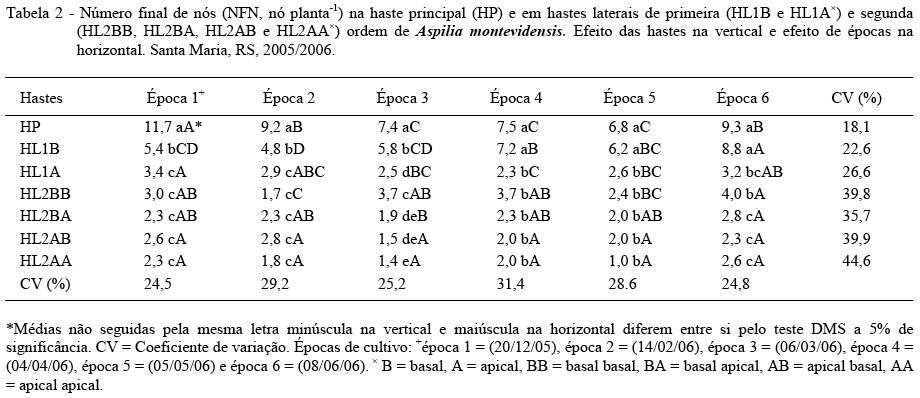Yellow calendula (Aspilia montevidensis) is a perenium herbaceous plant native of South and Southeast Brazil that has been little studied about its biology. The objective of this study was to determine the base temperature, the plastochron and the final node number in A. montevidensis. An experiment was conducted in Santa Maria, RS, with six planting dates (12/20/2005, 02/14/2006, 03/06/2006, 04/04/2006, 05/05/2006 and 06/08/2006). The experimental design was completely randomized and the experimental unit was one plant grown in pots filled with commercial substratum. The number of visible nodes were measured on the maim stem and on first and second order lateral branches. The base temperature for node appearance was estimated with the mean square error approach. The daily thermal unit was calculated from transplanting and the plastochron (°C day for the appearance of two successive nodes) was estimated for each stem. The estimated base temperature for node appearance in A. montevidensis was 0°C. Plastochron and final node number (FNN) vary among stems and planting dates, with the lowest plastochron and the greatest FNN on the MS.
degree-day; development; Aspilia montevidensis; thermal time



